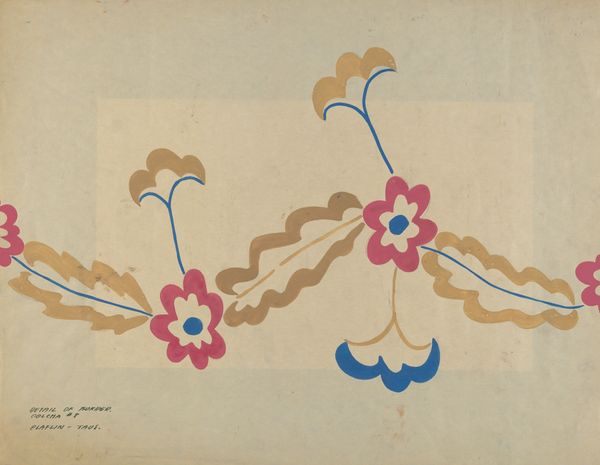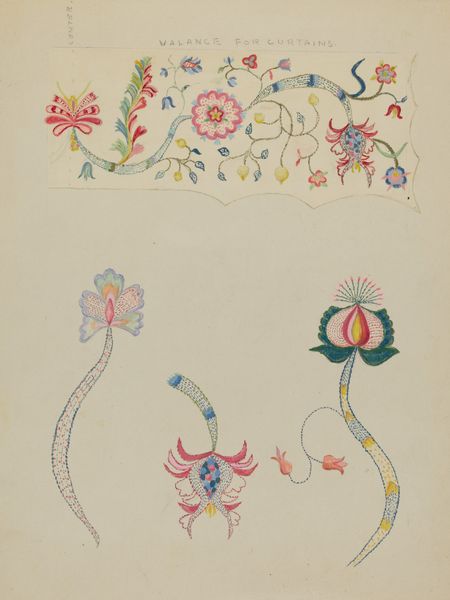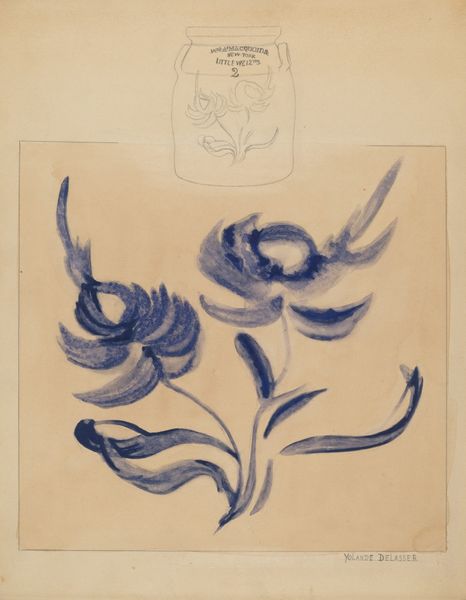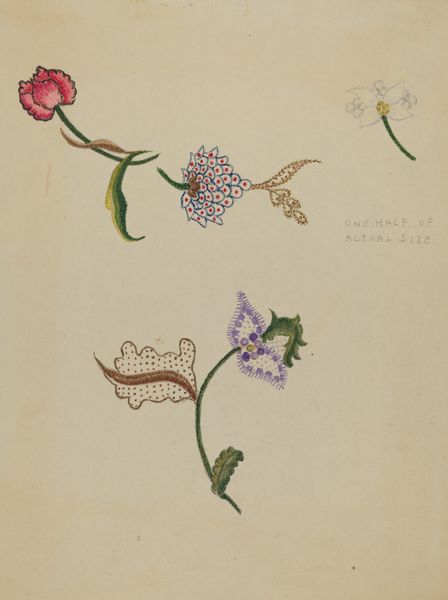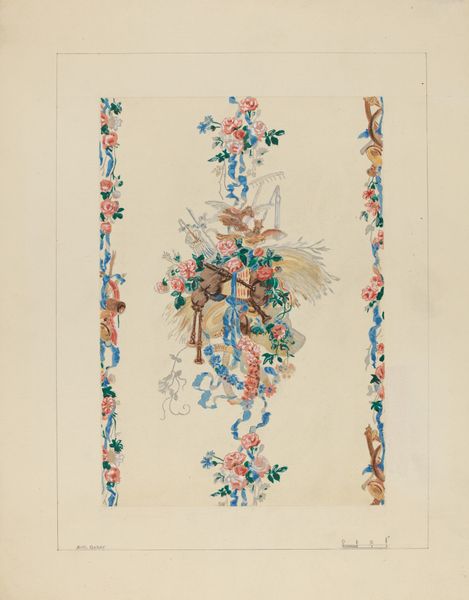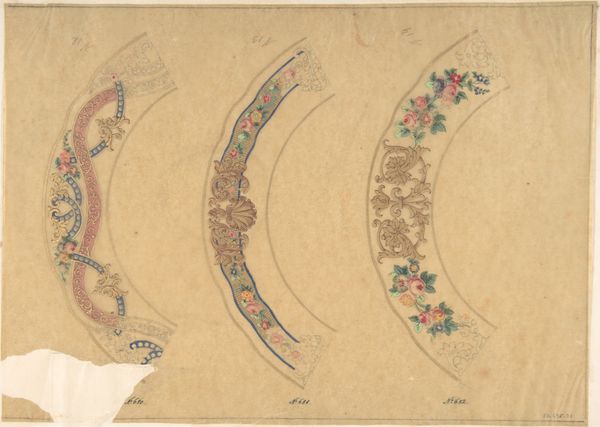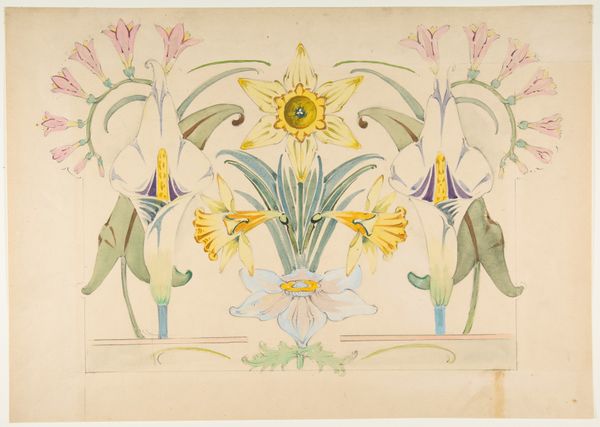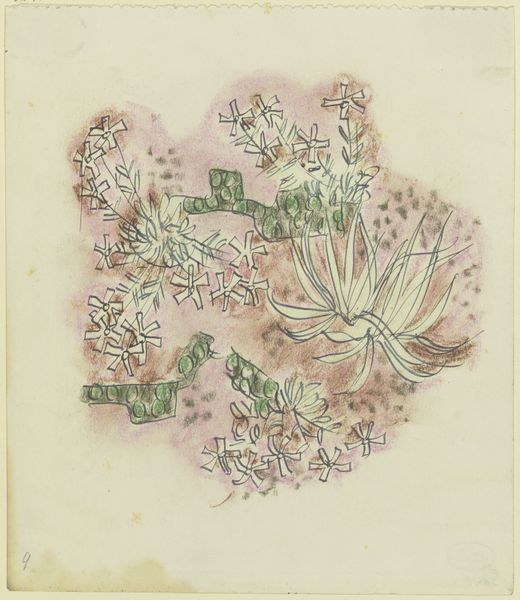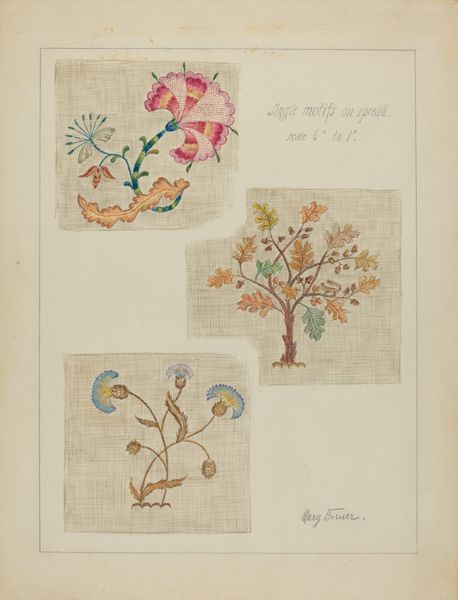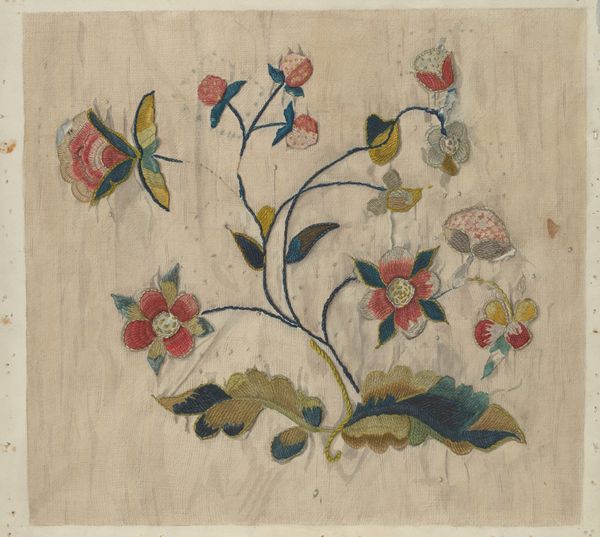
drawing, textile, paper, watercolor
#
drawing
#
water colours
#
textile
#
paper
#
watercolor
#
decorative-art
#
watercolor
Dimensions: overall: 28 x 35.8 cm (11 x 14 1/8 in.)
Copyright: National Gallery of Art: CC0 1.0
Curator: This lovely piece is called "Embroidery - Detail of Child's Dress," created by Mary E. Humes between 1935 and 1942. We're looking at a mixed media work; a drawing with watercolor on paper, depicting textile designs. Editor: Immediately, I'm struck by its gentleness. The muted pastel palette and delicate floral motifs evoke a sense of childhood innocence and a quiet, domestic sphere. Curator: Indeed. The Arts and Crafts movement, which saw a revival in handmade items, likely influenced such pieces, particularly during the interwar period. Mass production was impacting even everyday home items, yet pieces like this suggest both personal creation and care. These would’ve provided decoration but could also serve as plans and examples. Editor: It’s the floral language that truly captivates me. The rose, rendered in soft pinks, whispers of love and beauty, while the smaller blossoms hint at purity and nascent potential. Note, also, the teardrop motif that looks like a type of highly stylized leaf on both. It seems she favored these rounded organic forms, so evocative of growth. Curator: These botanical themes and their inherent symbolism were especially resonant in this period of both war and growing political power for many citizens. Floral decoration often acted as shorthand, connecting to concepts of beauty, truth, and nature, and provided a visual form of quiet political resistance for the makers. These colors contrast so interestingly. Editor: You’re right to mention color. The cool blues and greens used alongside those blush tones amplify the overall feeling. The palette offers a study of serenity but doesn’t lack boldness. One could trace these patterns back to ancient Greek decorations. A wave and leaf pattern such as the one we are presented with has signified many things over centuries. Curator: Absolutely. Examining works like Humes' reminds us how craft, often viewed as feminine or domestic, became, in a way, the voice of so many. What was domestic was not apolitical! The aesthetic principles reflected values that may not have been shared or upheld on a larger, national stage. Editor: Seeing these traditional patterns, reimagined through this woman’s hand, does bridge past and present beautifully, underscoring how deeply embedded certain motifs are within our cultural psyche. The dress it was intended for is likely long gone but the cultural impact resonates today.
Comments
No comments
Be the first to comment and join the conversation on the ultimate creative platform.

